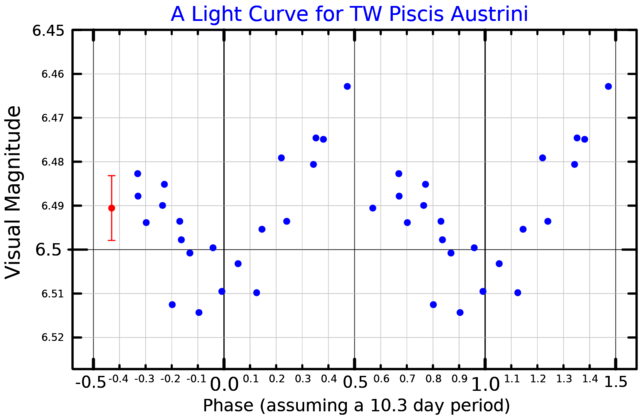Top Qs
Timeline
Chat
Perspective
TW Piscis Austrini
Star in the constellation Piscis Austrinus From Wikipedia, the free encyclopedia
Remove ads
TW Piscis Austrini (also known as Fomalhaut B) is a main sequence star in the constellation Piscis Austrinus. It lies relatively close to the Sun, at an estimated distance of 24.8 light-years (7.6 parsecs). To an observer on Earth the star is visually separated from its larger companion Fomalhaut (A) by 2 degrees—the width of four full moons.[8]
Remove ads
Stellar properties

The name TW Piscis Austrini is a variable star designation. This is a variable star of the type known as a BY Draconis variable, with surface brightness variations causing the changes as the star rotates. It varies slightly in apparent magnitude, ranging from 6.44 to 6.51 over a 10.3-day period.[2]
TW Piscis Austrini lies within a light-year of Fomalhaut.[10] Due to sharing the same proper motion, and the same estimated age of approximately 440 ± 40 million years, astronomers now consider them to be elements of a multiple star system.[5] A third star, dimmer and more widely separated, Fomalhaut C, gives the system the widest visual separation, to observers from Earth, at approximately 6 degrees.[8]
Remove ads
Planetary system
In 2019, an exoplanet candidate around Fomalhaut B was detected by astrometry, but this remains unconfirmed.[11][12]
See also
References
External links
Wikiwand - on
Seamless Wikipedia browsing. On steroids.
Remove ads

